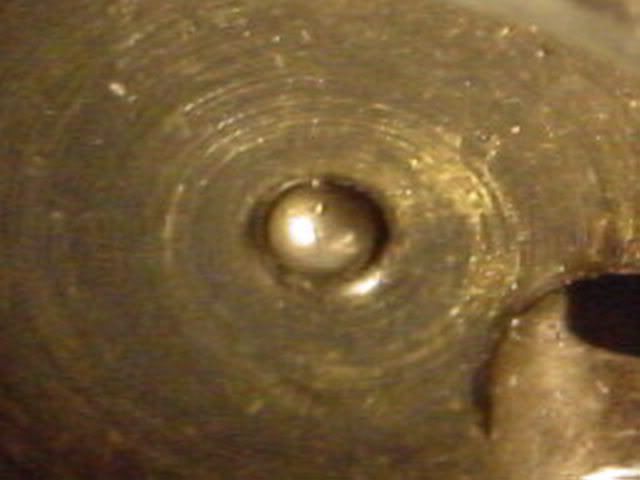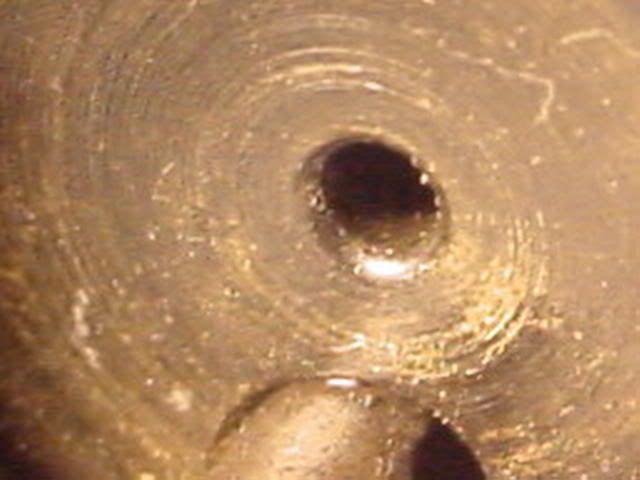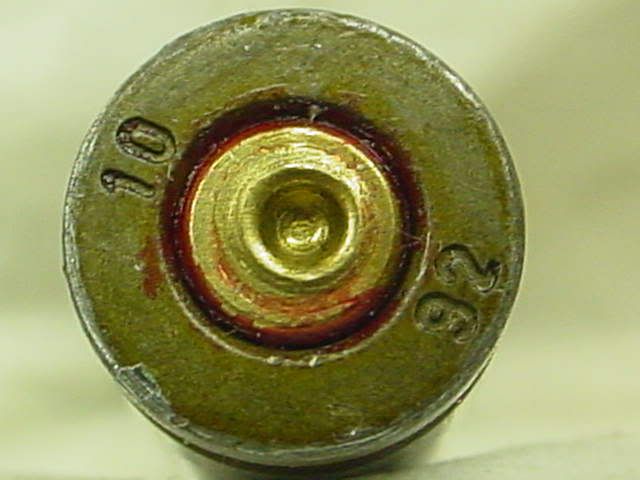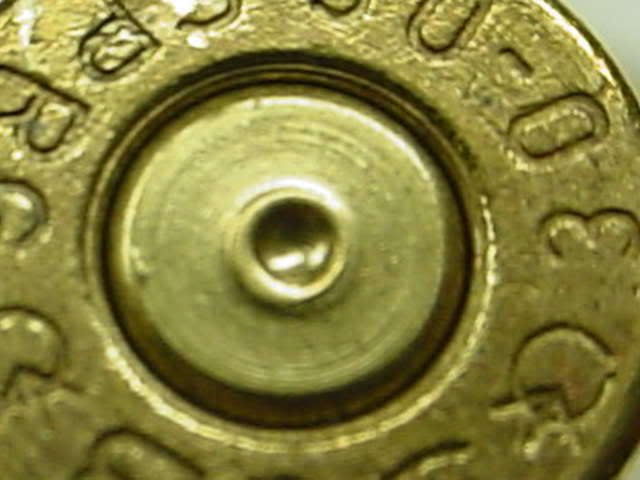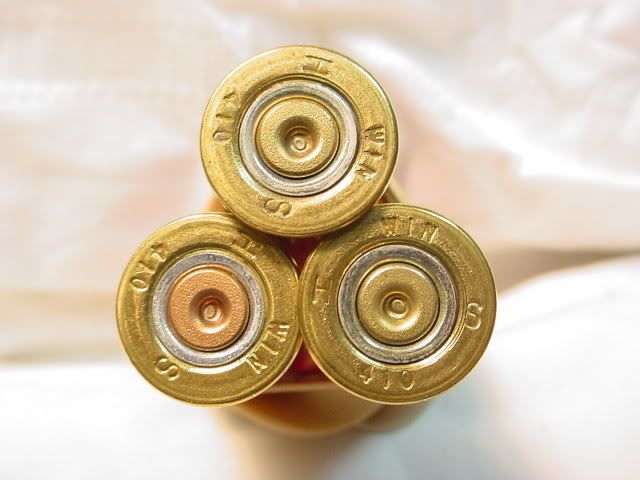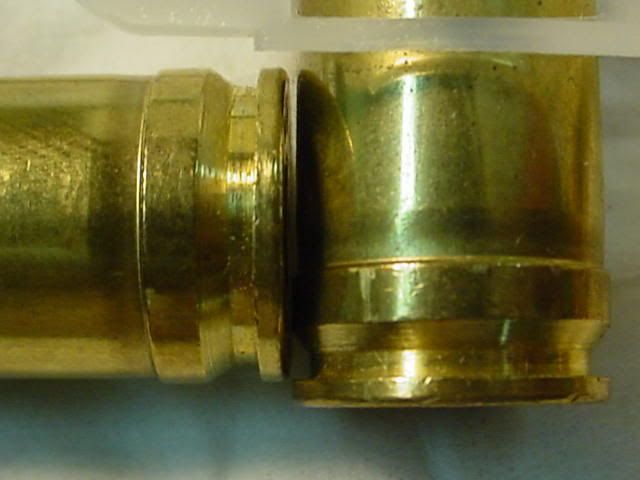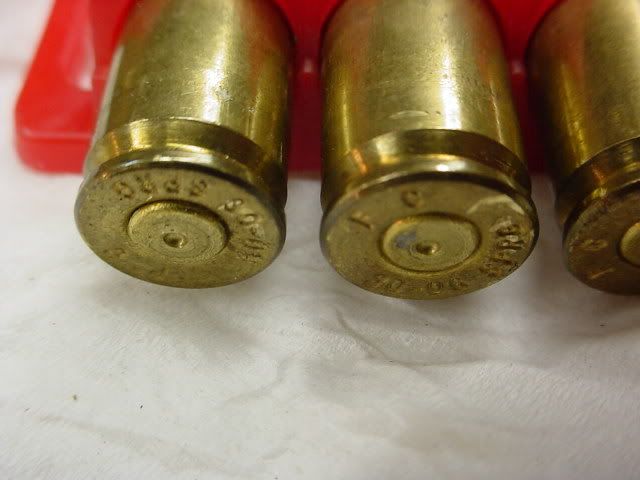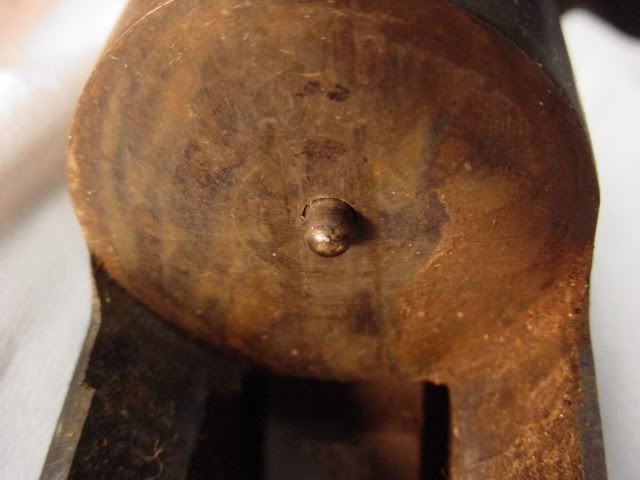Details
Give that man a ceegar.
One primer is backed out slightly, see?
The manager at Remington says that they have a form letter that they send to shooters, etc. that think that they have a problem with cratering of primers in their gun.
Right now, Remington is having their yearly shutdown for major machine maintenance, etc., but he is supposed to get me a copy as soon as he can.
I already believe him when he says that this is a typical condition to have a tiny chamfer on the new 7400's.
Perhaps you (WA) were shooting an older gun from prior to this minor design change.
Regardless of what I say or think, if the line personnel at Remington don't consider this minor chamfer/crater mimic to be of any concern to them (as long as we are talking MINOR, not YIKES) then I won't waste money and time on shipping in a gun with that condition.
You can avail yourself, like I did, and ask the personnel that you deal with where you could send samples of cases and/or e-mail pictures (like I have already been doing) so the response time and/or cost can be minimized.
Then, like you say (and I concur) the factory can be the one to shoulder the burden of decision and liability in questionable cases. Once they have given their decision, you can feel covered or whitewashed, as the case may be.
Here are the predecessor cases from the primers pictured in the last post showing a "re-flow" in the central part of the primer dent. These punctured primers mixed in these samples were an unpleasant discovery.
These were from the same time but had not punctured, but did exhibit signs of a rough firing pin tip in the center of the dents. Notice that top primer?
Why do you suppose that one shell failed to fire, and show such a minor firing pin mark, considering there were similar shells with punctured primers from the same session?
During the session with the .410 that made the previous examples, I had also shot another, a Stevens single shot.
Notice the re-flow on these primer dents. Now that's re-flow, ain't it?
This shotgun has the rebounding hammer, so the firing pin has no pressure exerted to hold it extended for more than a micro-second. The pin hole is large enough to allow some opportunitistic reforming under pressure. There is not a large clearance between the pin and hole, as shown.
I will have more interesting pictures for the next posting.
Will anyone have any guesses of why there was a failure to fire in with the punctures?
Are there any comments about the pictures in the previous posting, such as the AK74 crater, the 7 mag. case expansion marks, or the firing pin dent measurement/commentary?
kirbythegunsmith@hotmail.com

